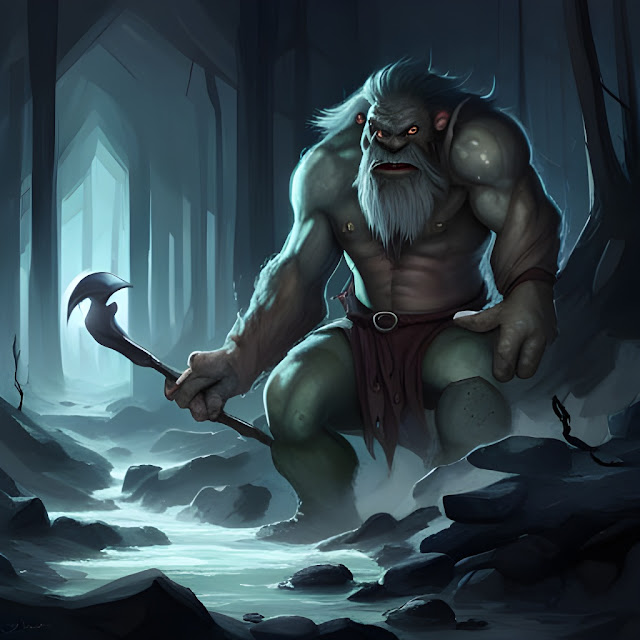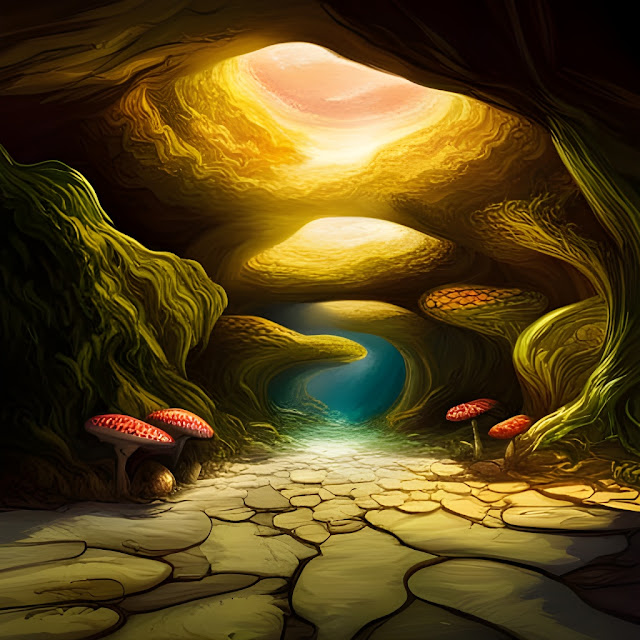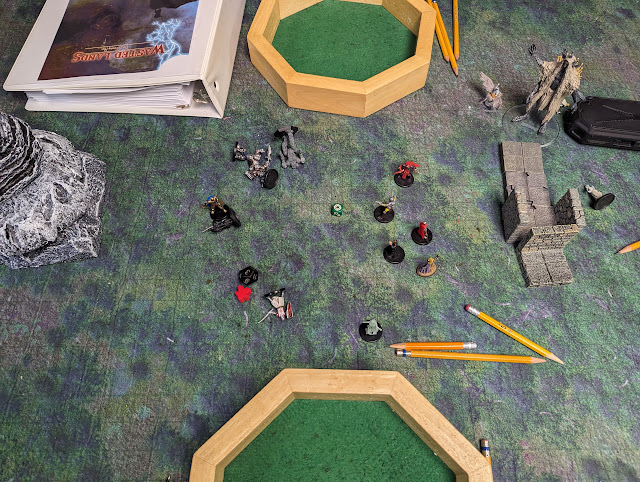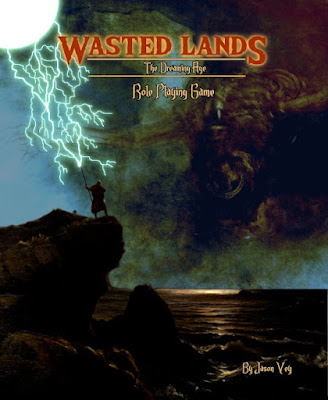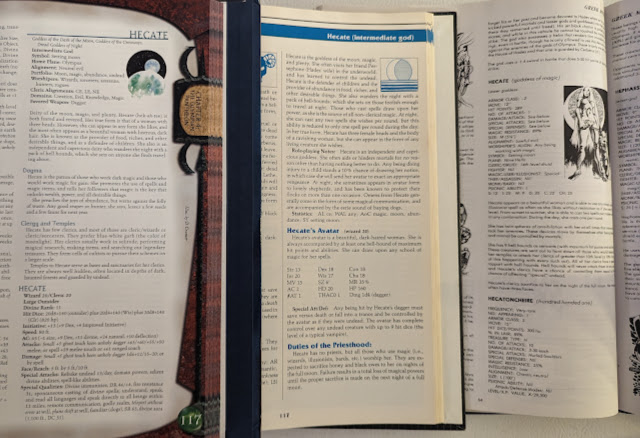Let's kick off this inaugural Deities & Demigods II post by trying to figure out what should be in the standard stat block for these gods. Let me begin with some assumptions.
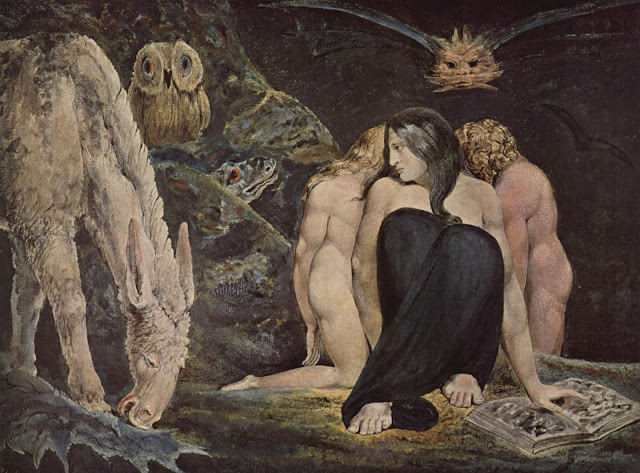 |
| The Triple Hecate, 1795. William Blake |
- I will favor AD&D 1st Edition. This is the system I have used the most. This is also the system that was the genesis of my original One Man's God feature. So I would like as much overlap as I can.
- I will pull in material from any other edition or variation of D&D as I see fit. In particular, some of the Avatar details from AD&D2 and D&D3 as well as any other material that might fit the bill.
- I am working under the assumption that these stat blocks ARE NOT designed as super-powerful monsters to kill. In already borrowing from AD&D2, and a house rule we used in the 80s, these stat blocks represent their avatars or mortal manifestations on/in the Prime Material. Their true forms on their own plane are at least 10x more powerful. Likely more.
Now these assumptions are working under a much larger assumption of how my Deities & Demigods II posts will be like moving forward.
Today I want to focus on the stat block. I am not detailing anything about this god, yet nor am I even defining things like standard divine abilities or power levels. Let's go with AD&D 1st Ed standard until I have reason to do otherwise and see where this goes.
I am going to start with the example of Hecate from Greek Mythology. After this, I will use her and this example to develop a new pantheon of gods. I spent a lot of time with her yesterday in preparation for this post.
Let's look at how Hecate is presented in the various D&D books.
Deities & Demigods: AD&D 1st Edition
For this I want to break down the AD&D 1st Ed Deities stat block.
HECATE (goddess of magic)Lesser goddessARMOR CLASS: -2
MOVE: 12"
HIT POINTS: 289
NO. OF ATTACKS: 1
DAMAGE/ATTACK: See below
SPECIAL ATTACKS: See below
SPECIAL DEFENSES: See below
MAGIC RESISTANCE: 89%
SIZE: M (51⁄4')
ALIGNMENT: Lawful evil
WORSHIPER'S ALIGN: Any being working with magic
SYMBOL: Setting moon
PLANE: Nine Hells
CLERIC/DRUID: 14th level druid
FIGHTER: Nil
MAGIC-USER/ILLUSIONIST: Special
THIEF/ASSASSIN: Nil
MONK/BARD: Nil
PSIONIC ABILITY: I
S: 12 1:25 W: 9 D: 20 C: 22 CH:25
I separated the sections with hard returns. I would use color, but that gives some screen readers for the visually impaired issues. So instead, I will go with the sections.
The first section starting with AC is very combat-focused. The number of attacks, damage per attack, special attacks, and more.
The second section starting with size is personal information and worshiper's information. This one is great for expansion.
The last section starting with classes is somewhat combat-focused and somewhat personal. For Hecate here, we expect she has some spellcasting ability but maybe not a lot of fighting. Though as a personal note, I disagree with her Wisdom being so low.
After this follows her description.
Ok. One of the most common complaints about the presentation in the D&DG is that this is too much like a monster. I high-level monster, but a monster all the same. It has AC and HP, so it must be able to be attacked and killed. This is not what we want or need. We have nothing here about her Clerics (save for those that use magic), holy days, or anything a worshiper might need/want.
There is a table in back that is actually much more useful than anything in the stat-block above.
This includes their name, Sphere of Control, Clerics [M,F,N-H], Rainment [head, body], Colors, Holy Days, Sacrifice [Frequency, Form], and Place of Worship.
For Hecate, these are: Magic, Hell Hound, yes, yes, no, bare head, tunic, blue-white, fall equinox, monthly on the full moon, ox, and mountain glen.
This is good material.
Legends & Lore: AD&D 2nd Edition
I don't need to go into as much detail here since the entries for all gods are typically shorter. But let's have a look at what we have anyway.
Here we get into the concept that the stats are not the God, but their avatars on the Mortal plane.
Ok, so you can't fight the god, but their avatar instead. A little better I guess.
There is mention here of the duties of the priesthood, what spell domains they gain, what Weapon and Non-Weapon prophecies they have access to, and so on. Though nothing about holy days, animals, colors or the like. Each pantheon/mythos does have some new spells and artifacts listed so that is also nice.
So the avatar and details on the priest characters are a good takeaways from this one.
Deities & Demigods: D&D 3rd Edition
Lastly, let's look at 3rd Edition, even if it is very different than the first two.
Ok I did pick this for a reason. There is a lot of information here for the players of the Clerics of these gods, which also gives us a Rosetta Stone of how to talk about the gods of other editions. That Rosetta Stone is the D&D Patheon, which at this time was primarily the Greyhawk one. Other editions use a similar set of gods and talk about what their priests can, can't, and could do. BUT that is all for another time. Let's get back to Hecate.
We get Domains, Divine Rank, her Alignment, favored weapons (which can be used by her priests) and Portfolio. All good information.
Unfortunately, 3.x goes on to embrace the worse parts of the 1st and 2nd Ed's books and then makes a bunch of their own.
I mean yeah, there is lot of information here, but is any of it needed by her clergy? Ok the sections on Dogma and Clergy and Temples is good. But do I *really* need to know or care how many Feats she has. No. Not unless she is going into combat. Which she shouldn't do.
There is an "Avatar of Hecate" on the next page that is reminiscent of the AD&D 2nd Ed one, but still, not exactly something we need.
What, if anything, can I get from all of this?
Well. Sadly the default presentation for the first 25 years of D&D appears to be "God as High-level Monster," which is not at all helpful.
I broke down these stat-blocks WAY back in 2010 when I was detailing a new cult, the Church of Lolth Ascendant, for the Drow Goddess Araushnee. There I captured the stats that seemed most valuable to the clerics (and players of the clerics) of that particular Goddess.
This has me wondering.
What should the format of a "Deities & Demigods II" be? What is the purpose of a book of gods for a D&D-like game?
Given what I have worked through here and in previous posts, I can see two different but related projects.
First, I can see a need/desire/want for a continuation of the format of the 1st Ed AD&D Deities & Demigods, monster-like stats, and all.
Secondly, I also see a need for a book of gods, demi-gods, and heroes, along with all the above-identified positive things like duties of the priesthood, holy days, and more. I would add new divine spells that are only available to those priesthoods. That's a much larger and more exciting project to be sure.
Deities & Demigods II is something I can do here, with some work. The other project, the so far unnamed one, that will be something that will take longer.
I think for the next post, I should first figure out what would be needed for a D&D-game god write-up.


